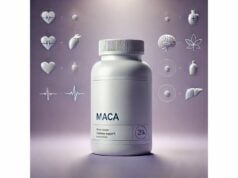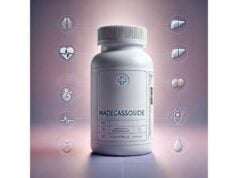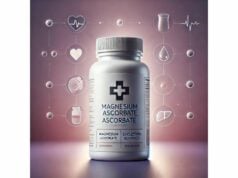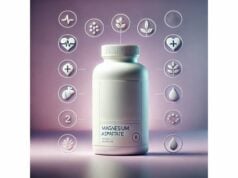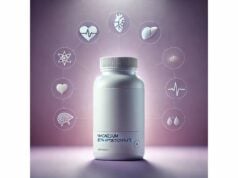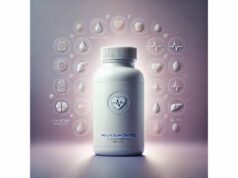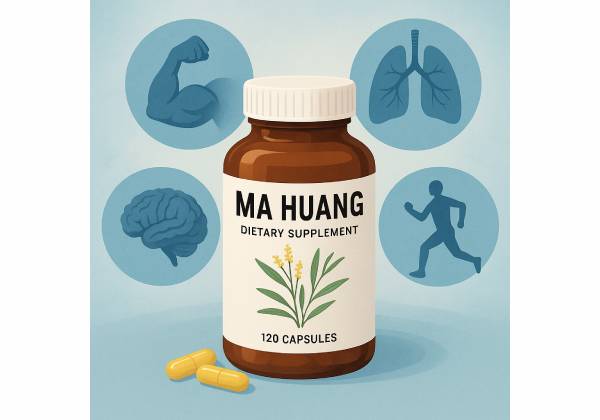
Ma Huang—better known in pharmacology as Ephedra sinica or simply ephedra—has been used for centuries in East Asian medicine for cough, wheezing, and congestion. Its most active compounds, the ephedrine-type alkaloids, stimulate the sympathetic nervous system. That pharmacology is why some people historically turned to Ma Huang for short-term weight reduction or a quick energy lift—and also why the herb has been tied to serious cardiovascular risks when misused. Today, ephedra-containing dietary supplements are banned in several countries, but ephedrine itself still appears in certain over-the-counter asthma tablets under strict directions. In this guide, you’ll learn what Ma Huang can and can’t do, how it works, what dosing looks like when ephedrine is used in regulated medicines, who should avoid it, how to stay within legal boundaries, and how to spot side effects early. The goal is practical: clear benefits, realistic expectations, and safety-first, people-first advice.
Key Insights
- Can ease bronchospasm and modestly aid short-term weight loss, but benefits are limited and context-dependent.
- Safety caveat: stimulant effects can raise heart rate and blood pressure; misuse has led to severe adverse events.
- Typical OTC ephedrine HCl directions: 12.5–25 mg every 4 hours as needed, maximum 150 mg/day for adults (per label).
- Avoid if you have heart disease, uncontrolled hypertension, arrhythmia, hyperthyroidism, glaucoma, or if you are pregnant, breastfeeding, or under 12.
Table of Contents
- What is Ma Huang and how it works
- Proven benefits and what to expect
- How much ephedrine per day?
- How to use Ma Huang safely and legally
- Who should avoid Ma Huang and interactions
- What does the evidence actually say
What is Ma Huang and how it works
Ma Huang (Ephedra sinica) is a shrub whose stems contain ephedrine-type alkaloids (primarily ephedrine and pseudoephedrine). These molecules are sympathomimetics—they stimulate adrenergic receptors directly and indirectly by promoting the release of norepinephrine. In practical terms, that means:
- Bronchodilation: Ephedrine relaxes smooth muscle in the airway, which can help with wheezing and chest tightness in mild, intermittent asthma.
- Thermogenesis and appetite effects: By increasing catecholamine signaling, ephedrine can temporarily raise energy expenditure and blunt appetite in some people.
- Central nervous system stimulation: Users may feel more alert, but stimulation also brings risks like jitteriness and insomnia.
Ma Huang vs. ephedrine vs. pseudoephedrine. The herb Ma Huang naturally contains ephedrine-type alkaloids; ephedrine is one isolated alkaloid available in some countries as an over-the-counter oral bronchodilator (often 12.5 mg per tablet). Pseudoephedrine—chemically related but not the same—is predominantly used as a nasal decongestant, not a bronchodilator. Herbal products labeled “ephedra-free” are not the same as Ma Huang; they often rely on caffeine-like stimulants and do not reproduce the herb’s exact pharmacology.
Why regulation is strict. The same mechanisms that unlock effects (higher heart rate, tighter vascular tone, CNS stimulation) also increase risk when dosing is too high, when combined with other stimulants (such as high-dose caffeine), or in people with underlying cardiovascular conditions. Because of widespread misuse and adverse events, many countries banned dietary supplements containing ephedra alkaloids. In the United States, for example, ephedra-alkaloid supplements are illegal to sell; ephedrine is still allowed in specific asthma tablet formulations with clear directions and warnings.
Traditional uses in East Asian medicine include formulas for wind-cold patterns, cough, and wheezing. However, modern safety standards emphasize sourcing, standardization, and clinical oversight—especially because the alkaloid content of raw plant material can vary with species and harvest conditions. That variability is a key reason regulators prefer standardized pharmaceutical products when these alkaloids are used at all.
Bottom line: Ma Huang is pharmacologically potent. Its benefits and risks stem from the same adrenergic push. If you encounter ephedrine today, it will most safely be in regulated medicines with strict labeling, not in weight-loss or “energy” supplements.
Proven benefits and what to expect
Respiratory relief (narrow scope). Ephedrine can relieve mild, intermittent asthma symptoms—wheezing, chest tightness, shortness of breath—by relaxing airway smooth muscle. That’s why some OTC oral bronchodilator tablets include ephedrine HCl. The relief is slower and generally less targeted than inhaled, short-acting beta-agonists (e.g., albuterol), and labels clearly state that tablets are not for quick relief of acute, severe symptoms. Expect onset within an hour and relatively modest improvement; if symptoms worsen or persist, labels direct you to seek medical care.
Weight management (modest, short-term). Controlled trials and meta-analyses of ephedrine-containing regimens—often combined with caffeine—show small to moderate short-term weight loss compared with placebo. Typical findings include about 1–2 kg more weight loss over a month relative to control and small favorable shifts in some lipid measures. However, trials are short (weeks to a few months), and long-term, sustained weight-loss data are lacking. Benefits tend to diminish as tolerance develops and as adherence falters due to side effects (e.g., insomnia, palpitations).
Energy and exercise performance. Claims of improved athletic performance are not well supported. Stimulant alertness is not the same as measurable improvements in strength, endurance, or meaningful training outcomes. Because ephedrine can raise heart rate and blood pressure, many sport and anti-doping authorities either restrict or closely monitor its use. Athletes should rely on their sport’s official guidance and team physicians rather than internet lore.
Cold symptoms and decongestion. People often conflate ephedra with pseudoephedrine (a decongestant). While Ma Huang formulas historically target cold patterns with congestion, ephedrine’s primary clinical use today is bronchodilation, not nasal decongestion. Over-the-counter cold products more commonly rely on pseudoephedrine or phenylephrine for nasal symptoms.
Expect realistic, not dramatic, outcomes. If used in line with medicine labels and medical advice, you might see modest symptom relief (airway) or modest short-term weight change. Dramatic results often reflect unsafe dosing, stimulant stacking, or misleading marketing—none of which is worth the risk.
Red flags that outweigh benefits: History of heart disease or stroke, uncontrolled hypertension, arrhythmias, hyperthyroidism, glaucoma, pregnancy, breastfeeding, or use of monoamine oxidase inhibitors (MAOIs). In any of these scenarios, the risk profile overtakes potential benefit.
How much ephedrine per day?
Context matters. Because ephedra-alkaloid dietary supplements are banned in several jurisdictions, dosing information that circulates online for weight loss is often unsafe, outdated, or illegal where you live. The only dosing you should follow is the dosing on approved medicine labels or instructions from a licensed clinician.
OTC oral bronchodilator labels (typical):
- Adults and children ≥12 years: 12.5–25 mg ephedrine HCl by mouth every 4 hours as needed for mild, intermittent asthma symptoms.
- Maximum: 150 mg ephedrine HCl in 24 hours.
- Children <12 years: do not use unless a doctor advises otherwise.
These directions appear on current U.S. over-the-counter ephedrine HCl tablets. Labels also warn against taking more than directed, using for frequent attacks, or relying on oral tablets for rapid rescue. If you need more than the directed amounts, if your symptoms worsen, or if you have >2 attacks in a week, labels direct you to seek medical care—signs your asthma is not adequately controlled.
Do not “stack” doses to chase energy, focus, or faster weight loss. The stimulant effect is dose-dependent, but so are side effects (tachycardia, tremor, insomnia) and serious risks (hypertensive crisis, arrhythmia). Many adverse events in the early 2000s were linked to doses above label, frequent redosing, or combinations with other stimulants.
Timing and tolerance. With repeated daily dosing, people often experience tolerance to subjective effects (less “buzz” over time) while cardiovascular strain can persist. Avoid evening doses to reduce insomnia. Respect the every-4-hours spacing on labels and the daily maximum.
Special populations and adjustments.
- Older adults: greater sensitivity to blood pressure and rhythm effects—use only under clinician guidance, if at all.
- Renal/hepatic impairment: consult a clinician; stimulant exposure may be less predictable.
- Concomitant disease: even “borderline” hypertension or thyroid overactivity can magnify risks.
- Pregnancy/breastfeeding: considered unsafe; avoid.
If you are reading fitness forums: Be aware that “protocols” sharing 20–60 mg ephedrine doses paired with high caffeine were popular before ephedra bans. These do not reflect modern safety practice, are not approved for weight loss, and can be dangerous—especially without medical screening.
Key guardrails to remember:
- Follow medicine labels exactly; do not exceed 150 mg/day of ephedrine HCl from all sources.
- Keep at least 4 hours between doses.
- Stop and seek help if you notice chest pain, fainting, severe headache, rapid or irregular heartbeat, or neurological symptoms.
- Never combine with MAOIs; be cautious with any other stimulant (caffeine, high-dose pre-workouts, decongestants).
- If you have more than two asthma attacks per week or need high/frequent doses, you need medical reassessment, not more ephedrine.
How to use Ma Huang safely and legally
First, check your jurisdiction. The legal status of Ma Huang (ephedra alkaloids) varies by country. In the United States and several other countries, dietary supplements containing ephedra alkaloids are banned because they present an unreasonable risk of illness or injury. You may still encounter ephedrine as an ingredient in regulated over-the-counter asthma tablets. That is a different regulatory category with strict warnings and dose limits.
If you only have access to regulated ephedrine tablets:
- Use for the labeled indication (temporary relief of mild, intermittent asthma).
- Follow label directions: 12.5–25 mg every 4 hours as needed, max 150 mg/day.
- Do not use tablets as a rescue for severe attacks; inhaled bronchodilators act faster.
- Avoid stimulant stacking. Many “pre-workout” and “fat burner” formulas hide caffeine or other stimulants under botanical names (e.g., guarana). Combining them with ephedrine raises risk of tachycardia, hypertension, anxiety, and arrhythmias.
- Minimize caffeine from coffee, energy drinks, and tea while using ephedrine.
If you live where TCM herbal practice is common: Ma Huang appears in classical formulas for cough and wheeze, often combined with other herbs that modulate its effects. Do not self-dose raw ephedra; seek a licensed practitioner who can tailor formulas, monitor for side effects, and avoid contraindications (e.g., hypertension, hyperthyroidism). Herbal ephedra products should be properly identified to species and standardized for alkaloid content when possible; quality varies, and Ephedra species differ in alkaloid profiles.
Use-case boundaries (what not to do):
- Not a weight-loss shortcut. Even where legal, the risk–benefit balance is poor for weight management, and long-term outcomes are unproven.
- Not an athletic performance enhancer. Evidence is weak, and regulatory/anti-doping limits apply to many athletes.
- Not for children under 12 unless a clinician specifically prescribes and monitors.
- Not during pregnancy or breastfeeding, given stimulant transfer and potential fetal/neonatal risks.
Practical safety steps if you and your clinician decide to try ephedrine-containing medicine:
- Screen: Check blood pressure, recent cardiovascular history, thyroid status, eye disease (glaucoma risk), and medications (especially MAOIs).
- Start at the low end of the label range (12.5 mg) and assess for 60–90 minutes.
- Track: Note heart rate, sleep quality, anxiety or tremor, and any chest sensations.
- Set a stop rule: Any palpitations, significant dizziness, chest pain, severe headache, or neurologic symptoms → stop immediately and seek urgent care.
- Reassess after a week: If you need frequent doses or symptoms persist, pivot to alternatives (inhaled therapies for asthma; non-stimulant weight-management strategies).
Sourcing tips: Buy medicines from licensed pharmacies only. Avoid products marketed as “herbal ephedra” for weight loss online—labels are often misleading, and contamination or undisclosed ingredients are common in that category.
Who should avoid Ma Huang and interactions
Absolute or strong contraindications (avoid):
- Cardiovascular disease: coronary artery disease, history of stroke or TIA, arrhythmias, cardiomyopathy.
- Uncontrolled or moderate-to-severe hypertension.
- Hyperthyroidism or pheochromocytoma.
- Glaucoma (especially narrow-angle).
- Pregnancy and breastfeeding.
- Children under 12 years (for OTC ephedrine tablets).
- Use of MAOIs now or within the past 14 days (e.g., phenelzine, tranylcypromine, selegiline). Combining ephedrine with MAOIs risks hypertensive crisis.
Use with extreme caution or avoid unless a clinician approves:
- Anxiety disorders, insomnia, or a history of panic—stimulants can exacerbate symptoms.
- Diabetes—adrenergic stimulation can affect glycemic control and mask hypoglycemia signs.
- Benign prostatic hyperplasia—urinary retention may worsen.
- Seizure disorders—CNS stimulation can lower seizure threshold.
High-risk interactions:
- Other stimulants: caffeine (including “guarana”), yohimbine, synephrine/bitter orange, high-dose green tea extracts. Stacking increases heart rate and blood pressure more than linearly and amplifies insomnia and anxiety.
- Decongestants: pseudoephedrine or phenylephrine—double stimulant burden without added benefit.
- Certain antidepressants: SNRIs and TCAs can raise noradrenergic tone; combined with ephedrine may elevate blood pressure or cause palpitations.
- Beta-agonist inhalers: rescue inhalers are appropriate for acute bronchospasm, but combining them with ephedrine may cause tremor and rapid heart rate; clinicians often advise spacing and careful monitoring.
- Thyroid hormone replacement: excessive adrenergic sensitivity if dosing is high or newly adjusted.
- Alcohol: paradoxically can worsen tachycardia and decision-making, increasing the chance of overdosing stimulants.
When to stop immediately and seek urgent care:
- Chest pain, pressure, or radiating jaw/arm pain.
- Fainting, severe lightheadedness, or confusion.
- Severe, sudden headache or visual changes.
- Heart rate that is rapid or irregular at rest, especially if associated with shortness of breath.
- Neurologic symptoms (weakness on one side, trouble speaking).
Common, usually dose-related side effects:
- Insomnia, nervousness, tremor, dry mouth, nausea, headache.
- Palpitations and increased heart rate are frequent; even small increases (e.g., ~5–6 beats per minute in some studies) can be meaningful in people with cardiac risk.
Medication label checkpoints before use:
- Confirm you actually have ephedrine HCl (not pseudoephedrine or another ingredient).
- Read the “Do not use” and “Ask a doctor before use if you have…” sections.
- Respect the maximum daily dose and every-4-hours spacing.
What does the evidence actually say
Weight loss efficacy—small, short-term. Systematic reviews and meta-analyses of ephedrine-containing products report modest short-term reductions in body weight compared with placebo, often on the order of 1–2 kg over a month. Some analyses also report small improvements in lipid markers (e.g., slightly higher HDL, slightly lower LDL and triglycerides). However, treatment durations are typically measured in weeks, not months; long-term efficacy and safety remain insufficiently studied. This matters because weight control is a chronic undertaking—short trials don’t tell us whether weight is regained, whether side effects accumulate, or how cardiovascular risk evolves over time.
Heart rate goes up; blood pressure effects vary. Across trials, heart rate increases are consistent (often ~5–6 bpm above placebo). Effects on systolic and diastolic blood pressure are mixed, partly because many trials exclude people with hypertension and because background caffeine use varies. For individual users—especially those with silent cardiovascular risk—even small average increases can translate into meaningful risk.
Formulation differences cloud interpretation. Many clinical studies used combinations (ephedrine + caffeine, or complex multi-herb formulas) rather than isolated ephedrine. That makes it hard to attribute outcomes to ephedra alone. Newer meta-analyses attempt to model dose–response relationships, but heterogeneity in ephedrine content, co-ingredients, and trial quality limits certainty.
Respiratory indications—narrow, label-bound use. Ephedrine’s bronchodilation is pharmacologically sound and appears as a labeled indication in some over-the-counter tablets for temporary relief of mild, intermittent asthma. Labels emphasize that oral ephedrine is not a quick-relief inhaler and shouldn’t be used for frequent symptoms—a sign that asthma is not well controlled.
Regulatory perspective prioritizes population safety. Following adverse event reports and risk evaluations, regulators in several countries banned ephedra-alkaloid dietary supplements, concluding that the risks outweigh the benefits under customary use. Regulators still allow specific ephedrine medicines with clear dosing and warnings, reflecting a narrow therapeutic window and the value of standardized labeling and pharmacovigilance.
What this means for you:
- If your primary goal is weight loss, build your plan around nutrition, resistance and aerobic training, sleep, and, when appropriate, clinically proven weight-management medicines prescribed by your clinician. Ephedra-type stimulants add risk and provide, at best, modest, short-term benefit.
- If you’re considering ephedrine tablets for mild, intermittent asthma, use them strictly per label, avoid other stimulants, and seek medical care if you need frequent doses or if symptoms escalate.
- Do not source ephedra products marketed online for “fat burning” or “energy.” The risk of mislabeling and adulteration is high, and the legal status is often unfavorable.
References
- Small Entity Compliance Guide: Final Rule Declaring Dietary Supplements Containing Ephedrine Alkaloids Adulterated Because They Present an Unreasonable Risk | FDA (2018)
- Information on Select Dietary Supplement Ingredients and Other Substances | FDA (2025)
- Effects of Ephedrine-Containing Products on Weight Loss and Lipid Profiles: A Systematic Review and Meta-Analysis of Randomized Controlled Trials – PubMed (2021) (Systematic Review)
- Frontiers | Efficacy and safety of ephedra-containing oral medications: a systematic review, meta-analysis, and exploratory dose–response analysis for weight reduction (2024) (Systematic Review)
- DailyMed – PRIMATENE- ephedrine hydrochloride tablet (2019 update; label accessed 2025)
Disclaimer
This guide is informational and does not replace personalized medical advice, diagnosis, or treatment. Ephedra alkaloids carry significant risks and are restricted or banned in many jurisdictions. Never start, stop, or combine medicines or supplements—especially stimulants—without consulting a qualified health professional who knows your health history and medications.
If you found this article helpful, please consider sharing it on Facebook, X (formerly Twitter), or your favorite platform, and follow us for future updates. Your support helps us continue producing thoughtful, evidence-based guides.

